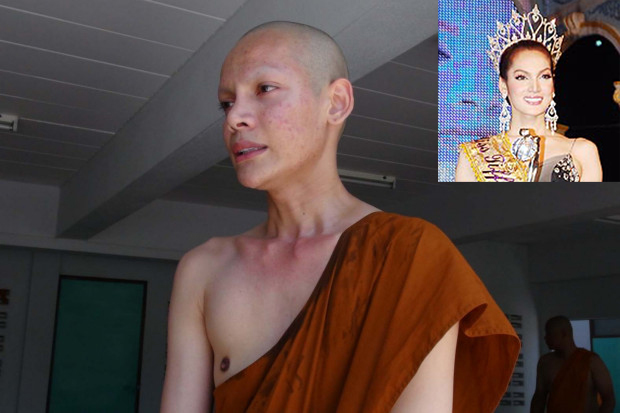Recent Articles
-
 The ladyboy forum is for sale
The ladyboy forum is for saleadmin - Mar 05 2025 12:51 AM
-
 Debunking Common Misconceptions About Ladyboys
Debunking Common Misconceptions About Ladyboysadmin - Apr 28 2023 09:13 PM
-
 How to tell if your ladyboy date is an Escort
How to tell if your ladyboy date is an Escortadmin - Apr 28 2023 09:01 PM
-
 Thai Ladyboys and Buddhism: a complex relationship
Thai Ladyboys and Buddhism: a complex relationshipadmin - Apr 28 2023 09:13 PM
-
 The Ladyboy Entrepreneurs
The Ladyboy Entrepreneursadmin - Apr 28 2023 09:13 PM
Recent Comments
-
 Why do Ladyboys have an obs...
Why do Ladyboys have an obs...michel2023 - May 15 2025 01:57 PM
-
 Why do Ladyboys have an obs...
Why do Ladyboys have an obs...Raipuragency - Oct 10 2024 02:15 PM
-
 Why do Ladyboys have an obs...
Why do Ladyboys have an obs...riyamehra - Sep 28 2024 06:10 PM
-
 Why do Ladyboys have an obs...
Why do Ladyboys have an obs...Laylyt - Sep 26 2024 05:13 PM
-
 Why do Ladyboys have an obs...
Why do Ladyboys have an obs...soniyathakur - Sep 18 2024 03:57 PM
-
 Why do Ladyboys have an obs...
Why do Ladyboys have an obs...GoaEscortsSupriya - Aug 23 2024 02:55 AM
Featured Events
Thai Ladyboys and Buddhism: a complex relationship
Aug 24 2023 06:23 PM |
admin
in Ladyboy Addicts
religion Thailand History It’s been something that has fascinated me for a long time, and I’ve enjoyed exploring the topic deeper for this article.
It’s been something that has fascinated me for a long time, and I’ve enjoyed exploring the topic deeper for this article.Through this exploration, I want to shed light on the diverse experiences of Thai ladyboys within the context of Buddhist teachings and practices. As I delved into this topic, it surprised me how Buddhist principles both challenge and support the identities and experiences of Thai ladyboys and how deep and complex the relationship between the two has become.
A Relationship Dating Back to Ancient Times
The history of Buddhism in ancient Thailand can be traced back to the 3rd century BCE when Theravada Buddhism spread from India to Southeast Asia. As Buddhism became entrenched in Thai culture, it shaped societal attitudes towards gender and sexuality.
Ladyboys have been noted in Thai society for centuries, with their presence documented in ancient texts and art. The role of kathoeys in ancient Thailand was multifaceted; they often served as entertainers, spiritual healers, and even warriors. This historical recognition and integration of kathoeys into various aspects of society demonstrate Thailand's long-standing acceptance of gender diversity, influenced by the teachings and principles of Buddhism.
Buddhism and the Concept of Gender

Buddhism in Thailand embraces the concept of impermanence, acknowledging that everything is subject to change, including one's gender identity. This holistic approach encourages empathy and non-judgment towards those who identify as transgender or gender non-conforming. The religion's core teachings, such as the Four Noble Truths and the Eightfold Path, emphasise cultivating wisdom and ethical behaviour, which fosters a more inclusive environment.
Despite this inherent openness, cultural and societal factors can still contribute to discrimination and marginalisation of ladyboys. For instance, traditional gender roles and expectations might limit opportunities for personal growth and societal integration. Furthermore, misunderstandings and misinterpretations of Buddhist teachings can hinder true inclusivity.
The Third Gender in Thai Society
In line with Buddhist teachings, Thai society's recognition of the "third gender" demonstrates a unique cultural understanding of gender diversity. However, there needs to be some clarification. Like many, I was under the firm belief that the word kathoey was a term that referred to ladyboys and their status as a unique gender. I was surprised to learn that the word actually refers to a broader spectrum of non-binary and gender non-conforming identities. Ladyboys, the most visible and prominent group, have become synonymous with the term kathoey, but its true definition does not mean transgender female.
Despite the wider acceptance, influenced heavily by Buddhist belief, the acceptance of ladyboys in Thailand is not uniform. The experience of ladyboys in Thai society can differ significantly based on socioeconomic status, family support, and regional attitudes. Additionally, ongoing prejudice and discrimination can impact their education, employment, and healthcare access.
Ladyboys and the Monastic Life

One of the most revered aspects of Thai culture is the monastic life, with many young men expected to become monks for some time as a rite of passage. However, for ladyboys, this experience can be fraught with difficulty. While some temples may be open to accepting transgender individuals, others may not, which can lead to feelings of exclusion and marginalisation within the spiritual community.
Despite these challenges, some ladyboys have found solace and support in monastic life, even becoming respected spiritual leaders. An example of such a trailblazer is Phra Maha Sompong Talaputto, a transgender woman who became a revered Buddhist monk and teacher.
The Power of Compassion and Understanding
Thai society, like any other, is constantly evolving, and many individuals and organisations are working to promote greater acceptance and understanding of transgender individuals within the Buddhist community.
One such organisation is the Anjaree Group, which works to create a safe space for LGBTQ+ individuals to explore their spirituality within a Buddhist framework. By fostering open dialogue and understanding, organisations like Anjaree Group are helping to build bridges between the transgender community and the larger Buddhist society.
The relationship between Thai ladyboys and Buddhism is a fascinating and intricate tapestry, reflecting Thai society's diverse and ever-evolving nature. While there is a level of acceptance and understanding rooted in Buddhist teachings, it's essential to acknowledge the challenges and discrimination that ladyboys may face.
The Buddha once said, "Thousands of candles can be lit from a single candle, and the candle's life will not be shortened. Happiness never decreases by being shared."
For the dating ladyboys in Thailand we recommend joining Thai Friendly which has hundreds of Thai ladyboys listed.
For dating ladyboys globally we recommend joining My Ladyboy Date which has attractive ladyboys in many Asian and Western countries.
For ladyboy escorts in Asia and Europe, make sure to try Smooci.












0 Comments